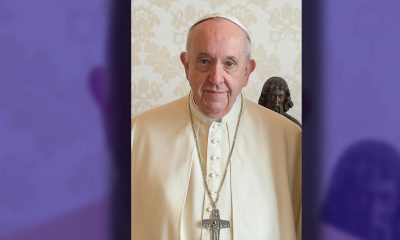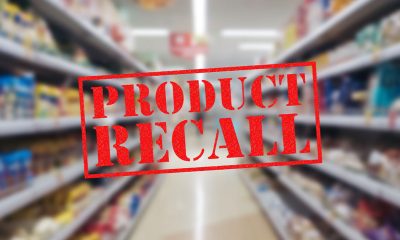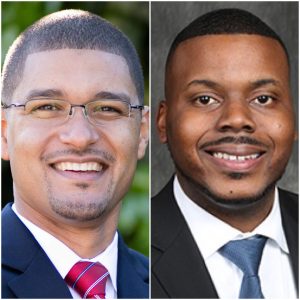#NNPA BlackPress
Minnesota Doctors on the Cutting Edge Of COVID-19 Fight
NNPA NEWSWIRE — Molecular testing technologies help detect the presence of a virus by identifying a small section of the virus’ genome, then amplifying that portion until there’s enough for detection. This process can cut testing wait time from hours, if not days, to as little as five minutes for positive results and 13 minutes for negative results. They have been using this technique for influenza detection since 2014.
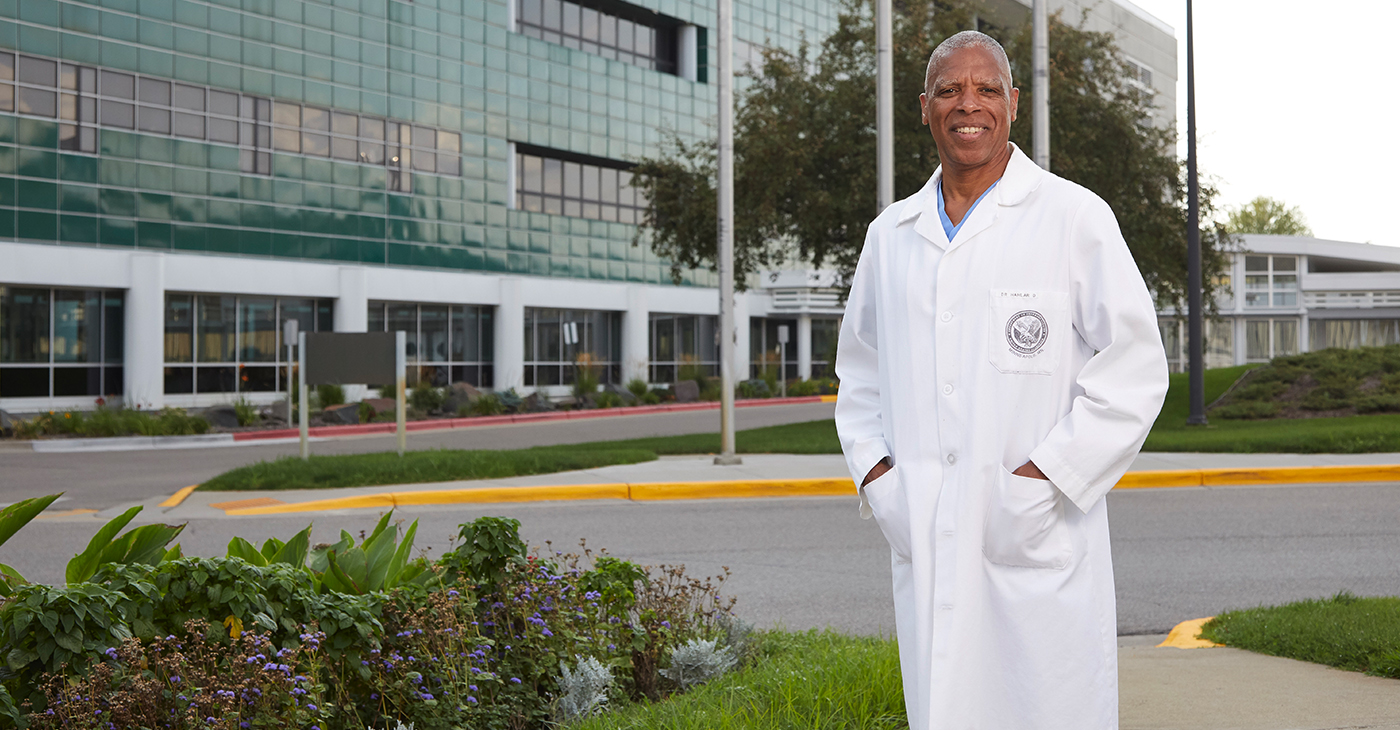
By Mel Reeves, Minnesota Spokesman-Recorder Community Editor
Minnesota doctors and researchers are on the cutting edge leading the fight in the war against COVID-19. Doctors and researchers at the University of Minnesota and Mayo Clinic are searching for medications that help ease the effects of the virus, including a process of plasma transfer, while also working to develop a vaccine.
No ‘new normal’ until August
The MSR interviewed Dr. David Hamlar (DH), assistant professor of the Department of Otolaryngology at the University of Minnesota
MSR: Incredibly, despite the number of cases and deaths, there are some in our community calling the coronavirus a conspiracy or hoax. What do you say to them?
DH: This is no hoax!
MSR: Why has the CDC and others recommended people stay six feet apart?
DH: People who are within six feet of one another may spread the virus through respiratory droplets produced when an infected person coughs or sneezes. These droplets can land in the mouths or noses of those who are nearby or potentially be inhaled into the lungs. The droplets are airborne through aerosolization [producing a fine mist of minute particles].
MSR: How does one actually contract the virus?
DH: The COVID-19 virus can live in any living cell. It is transmitted primarily via the aero-digestive system, meaning airways and oral mucosa.
MSR: Has anything been found to be effective in fighting off the effects of the virus?
DH: Peridex or chlorhexidine has been found to decrease the viral load but not eliminate the virus itself.
MSR: There has been talk about anti-virals being effective in helping those who have contracted the virus to fight it off. Tell us more about that.
DH: Antivirals are the same medications initially utilized in HIV-positive patients who contracted AIDS. These seemed to lessen the symptoms if not reduce the viral load and increase the CD4-T cell count.
MSR: What makes the virus fatal?
DH: COVID-19 deaths are attributed to pulmonary or lung disease progression such as pneumonia. Cardiac events such as heart attacks have not been found to be part of the disease progression and death.
MSR: Why are pre-existing diseases a serious problem for people if they contract the virus?
DH: Pre-existing conditions such as asthma, chronic obstructive pulmonary disease, COPD, diabetes, congestive heart failure, CHF, and autoimmune diseases limit the body’s ability to fight diseases.
MSR: There has been a lot of discussion in the medical community about a vaccine. How soon do you anticipate one being ready for use?
DH: With controlled protocol-based studies, the estimate for a safe vaccine is 9-12 months away.
MSR: There have been problems in the U.S. getting people tested for COVID-19, some reporting long waits for test results. It has been reported that Abbott Labs has come up with a test that can provide results in a matter of minutes. How are they able to do this?
DH: Abbott Labs can detect the COVID-19 virus through a technique called molecular point-of-care testing for COVID-19, which offers healthcare workers rapid results in more settings where people show up for care.
Molecular testing technologies help detect the presence of a virus by identifying a small section of the virus’ genome, then amplifying that portion until there’s enough for detection. This process can cut testing wait time from hours, if not days, to as little as five minutes for positive results and 13 minutes for negative results. They have been using this technique for influenza detection since 2014.
MSR: There has been some discussion around Vitamin C that it can help stave off the disease. What is your professional opinion about its effectiveness?
DH: Vitamin C is a potent antioxidant, helping to reduce the damage caused by free radicals and thereby helping prevent the development of conditions like heart disease and cancer. Severe vitamin C deficiency is a serious condition, known for centuries as the sometimes-fatal disease scurvy. It helps in wound healing. It is a part of a healthy diet. It is not a specific inhibitor of contracting COVID-19.
MSR: When do you expect the virus to peak? When do you think the country can get back to normal?
DH: I personally feel that this is a virus that will be with us for prolonged periods until a vaccine is found. If the virus mutates or recurs in different forms, then even vaccines will be limiting disease agents like with influenza.
Once we get control or flatten the curve, we can start to realize a “new normal.” I predict August.
MSR: Any advice to our readers on how to stay safe during this pandemic?
DH: Stay healthy. Eat right, get rest, don’t smoke, limit alcohol use, and do all of the things your mother told you to do but you neglected!
Push for plasma treatment underway
At Mayo Clinic in Rochester, Dr. Michael Joyner (MJ) is part of a group of experts who are pursuing a unique but time-tested treatment to help patients with COVID-19 fight off the virus. Convalescent plasma treatment has been used historically to treat infectious diseases before the discovery of vaccines.
MSR: What is involved in convalescent plasma treatment?
MJ: It involves taking antibody-rich plasma from the blood of patients who have survived COVID-19, then infusing it into those who are ill to help their bodies fight off the disease. The approach is known as “convalescent plasma treatment.”
MSR: Why is it called convalescent plasma treatment?
MJ: It’s called convalescent because the word refers to when people are getting better.
MSR: You spent most of your career as a physiologist. How did you get involved in this?
MJ: That’s true, and I am also an anesthesiologist. What happened is my friend Dr. Arturo Casadevalle at John Hopkins wrote an editorial in the Wall Street Journal discussing the historical use of convalescent plasma.
I reached out to Arturo, and since we have a large network of collaborators, we reached out to them. This was me repurposing my career for a few months in my lab to help attack this problem, to see if we could find some way to push back.
I have thrown in with Arturo and want to help him move this forward. He is our visionary and spiritual leader.
MSR: Tell us who else is involved in this project.
MJ: We have people from about 40 universities and medical centers all over the country from about 20 states working on this, and we are getting cooperation from the Food and Drug Administration. We are trying to get this online right away. It’s already started in New York and Houston, and we hope the pace is going to pick up throughout April.
MSR: The FDA has approved the process but with limitations. Can you explain the limits?
DJ: You have to get special permission. It’s one off at a time. We are currently working to get an expanded access protocol going so we can begin to collect more [plasma] all over the country and treat more people.
It’s going to be a while until the supply is high. Infrastructure is being put in place to collect it at scale, distribute it, and get it to the people who can benefit from it. And then keep detailed records and make sure we do all the compliance and reporting, get people’s permission, and study it while we are actually using it. We want to do it in a rigorous and ethical way.
MSR: When does this treatment date back from?
MJ: Before 1900 it was tried.
MSR: It appears some people have died from heart failure as a result of contracting the virus. How do you explain this?
MJ: One of things that can happen when you have an overwhelming infection is you have a condition called myocarditis, meaning the heart becomes inflamed and the efficiency of the pumping action becomes worse. It’s unclear if COVID-19 does anything unusual.
It appears that when you are septic and when you have critical illness, when you have multi-organ failure, typically your heart function goes down as well. It’s unclear if there is any kind of nasty stuff being excreted by this virus.
It’s possible it targets the heart, but we don’t know that yet. My guess is it is more of the general phenomena. Time will tell. We have to do the research.
MSR: How does COVID-19 attack the body?
MJ: It’s not clear exactly how COVID attacks the body. I think we are 80 percent there. We have the general game plan, but the details are still being worked out.
MSR: How are you going to get started in Minnesota?
MJ: There are plans to collect it [plasma] and distribute it nationally. Most of the people we will begin to collect [plasma] from will be in the Rochester and southeastern Minnesota region.
MSR: What is plasma?
MJ: When you look at your blood it is red, but red cells are about 40 percent. The rest is protein-containing fluid that, if you separate it, put it in a centrifuge and spin it around, you will get this kind of yellowish material. That’s plasma. It is the part of the blood that is not the red and white cells, the non-cellular part of the blood.
MSR: What are this treatment’s chances of success?
MJ: It’s too soon to tell. It depends on how sick the patient is. Our best shot is people who are sick but not terribly sick or in the ICU yet. And it may help people in the ICU.
What we are trying to do is bend some curves. We want to stop people deteriorating as they go from sick to the ICU, and as they get in the ICU and do worse, we want them to stabilize and get better.
#NNPA BlackPress
Chavis and Bryant Lead Charge as Target Boycott Grows
BLACKPRESSUSA NEWSWIRE — Surrounded by civil rights leaders, economists, educators, and activists, Bryant declared the Black community’s power to hold corporations accountable for broken promises.

By Stacy M. Brown
BlackPressUSA.com Senior National Correspondent
Calling for continued economic action and community solidarity, Dr. Jamal H. Bryant launched the second phase of the national boycott against retail giant Target this week at New Birth Missionary Baptist Church in Atlanta. Surrounded by civil rights leaders, economists, educators, and activists, Bryant declared the Black community’s power to hold corporations accountable for broken promises. “They said they were going to invest in Black communities. They said it — not us,” Bryant told the packed sanctuary. “Now they want to break those promises quietly. That ends tonight.” The town hall marked the conclusion of Bryant’s 40-day “Target fast,” initiated on March 3 after Target pulled back its Diversity, Equity, and Inclusion (DEI) commitments. Among those was a public pledge to spend $2 billion with Black-owned businesses by 2025—a pledge Bryant said was made voluntarily in the wake of George Floyd’s murder in 2020.“No company would dare do to the Jewish or Asian communities what they’ve done to us,” Bryant said. “They think they can get away with it. But not this time.”
The evening featured voices from national movements, including civil rights icon and National Newspaper Publishers Association (NNPA) President & CEO Dr. Benjamin F. Chavis Jr., who reinforced the need for sustained consciousness and collective media engagement. The NNPA is the trade association of the 250 African American newspapers and media companies known as The Black Press of America. “On the front page of all of our papers this week will be the announcement that the boycott continues all over the United States,” said Chavis. “I would hope that everyone would subscribe to a Black newspaper, a Black-owned newspaper, subscribe to an economic development program — because the consciousness that we need has to be constantly fed.” Chavis warned against the bombardment of negativity and urged the community to stay engaged beyond single events. “You can come to an event and get that consciousness and then lose it tomorrow,” he said. “We’re bombarded with all of the disgust and hopelessness. But I believe that starting tonight, going forward, we should be more conscious about how we help one another.”
He added, “We can attain and gain a lot more ground even during this period if we turn to each other rather than turning on each other.” Other speakers included Tamika Mallory, Dr. David Johns, Dr. Rashad Richey, educator Dr. Karri Bryant, and U.S. Black Chambers President Ron Busby. Each speaker echoed Bryant’s demand that economic protests be paired with reinvestment in Black businesses and communities. “We are the moral consciousness of this country,” Bryant said. “When we move, the whole nation moves.” Sixteen-year-old William Moore Jr., the youngest attendee, captured the crowd with a challenge to reach younger generations through social media and direct engagement. “If we want to grow this movement, we have to push this narrative in a way that connects,” he said.
Dr. Johns stressed reclaiming cultural identity and resisting systems designed to keep communities uninformed and divided. “We don’t need validation from corporations. We need to teach our children who they are and support each other with love,” he said. Busby directed attendees to platforms like ByBlack.us, a digital directory of over 150,000 Black-owned businesses, encouraging them to shift their dollars from corporations like Target to Black enterprises. Bryant closed by urging the audience to register at targetfast.org, which will soon be renamed to reflect the expanding boycott movement. “They played on our sympathies in 2020. But now we know better,” Bryant said. “And now, we move.”
#NNPA BlackPress
The Department of Education is Collecting Delinquent Student Loan Debt
BLACKPRESSUSA NEWSWIRE — the Department of Education will withhold money from tax refunds and Social Security benefits, garnish federal employee wages, and withhold federal pensions from people who have defaulted on their student loan debt.

By April Ryan
Trump Targets Wages for Forgiven Student Debt
The Department of Education, which the Trump administration is working to abolish, will now serve as the collection agency for delinquent student loan debt for 5.3 million people who the administration says are delinquent and owe at least a year’s worth of student loan payments. “It is a liability to taxpayers,” says White House Press Secretary Karoline Leavitt at Tuesday’s White House Press briefing. She also emphasized the student loan federal government portfolio is “worth nearly $1.6 trillion.” The Trump administration says borrowers must repay their loans, and those in “default will face involuntary collections.” Next month, the Department of Education will withhold money from tax refunds and Social Security benefits, garnish federal employee wages, and withhold federal pensions from people who have defaulted on their student loan debt. Leavitt says “we can not “kick the can down the road” any longer.”
Much of this delinquent debt is said to have resulted from the grace period the Biden administration gave for student loan repayment. The grace period initially was set for 12 months but extended into three years, ending September 30, 2024. The Trump administration will begin collecting the delinquent payments starting May 5. Dr. Walter M. Kimbrough, president of Talladega College, told Black Press USA, “We can have that conversation about people paying their loans as long as we talk about the broader income inequality. Put everything on the table, put it on the table, and we can have a conversation.” Kimbrough asserts, “The big picture is that Black people have a fraction of wealth of white so you’re… already starting with a gap and then when you look at higher education, for example, no one talks about Black G.I.’s that didn’t get the G.I. Bill. A lot of people go to school and build wealth for their family…Black people have a fraction of wealth, so you already start with a wide gap.”
According to the Education Data Initiative, https://educationdata.org/average-time-to-repay-student-loans It takes the average borrower 20 years to pay their student loan debt. It also highlights how some professional graduates take over 45 years to repay student loans. A high-profile example of the timeline of student loan repayment is the former president and former First Lady Barack and Michelle Obama, who paid off their student loans by 2005 while in their 40s. On a related note, then-president Joe Biden spent much time haggling with progressives and Democratic leaders like Senators Elizabeth Warren and Chuck Schumer on Capitol Hill about whether and how student loan forgiveness would even happen.
#NNPA BlackPress
VIDEO: The Rev. Dr. Benjamin F. Chavis, Jr. at United Nations Permanent Forum on People of African Descent
https://youtu.be/Uy_BMKVtRVQ Excellencies: With all protocol noted and respected, I am speaking today on behalf of the Black Press of America and on behalf of the Press of People of African Descent throughout the world. I thank the Proctor Conference that helped to ensure our presence here at the Fourth Session of the […]

Excellencies:
-

 Activism4 weeks ago
Activism4 weeks agoOakland Post Endorses Barbara Lee
-
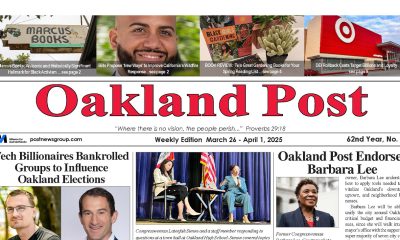
 Activism4 weeks ago
Activism4 weeks agoOakland Post: Week of March 28 – April 1, 2025
-

 Activism3 weeks ago
Activism3 weeks agoOakland Post: Week of April 2 – 8, 2025
-

 #NNPA BlackPress3 weeks ago
#NNPA BlackPress3 weeks agoTrump Profits, Black America Pays the Price
-

 Activism2 weeks ago
Activism2 weeks agoOakland Post: Week of April 9 – 15, 2025
-

 #NNPA BlackPress3 weeks ago
#NNPA BlackPress3 weeks agoHarriet Tubman Scrubbed; DEI Dismantled
-

 #NNPA BlackPress3 weeks ago
#NNPA BlackPress3 weeks agoLawmakers Greenlight Reparations Study for Descendants of Enslaved Marylanders
-

 #NNPA BlackPress3 weeks ago
#NNPA BlackPress3 weeks agoTrump Targets a Slavery Removal from the National Museum of African-American History and Culture




